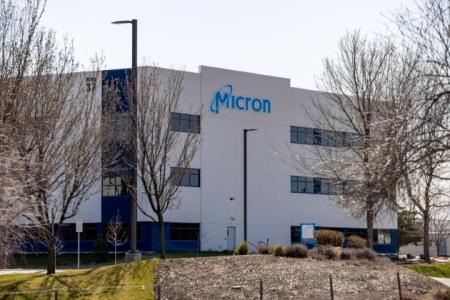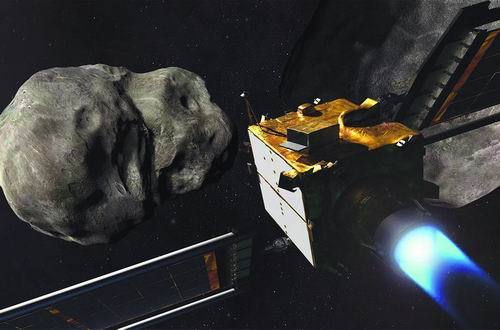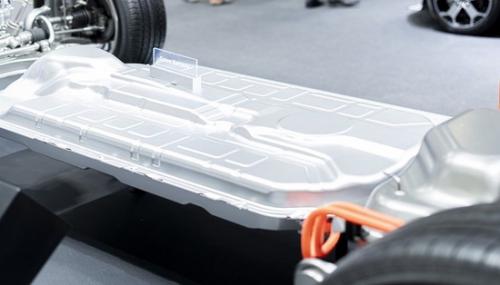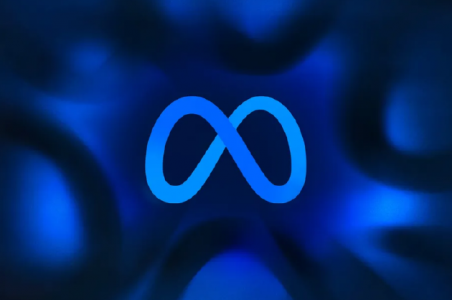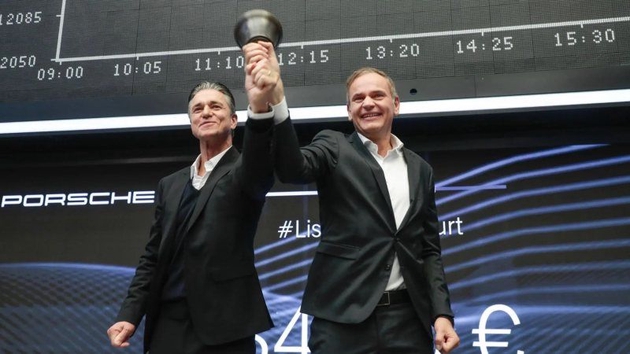your current location is:Home > TechnologyHomeTechnology
Go to Mars or go to the factory to screw the screws? How Tesla's mass production of humanoid robots will change lives
A year ago, the Tesla humanoid robot "Optimus Prime" appeared as an easter egg on the Tesla AI (Artificial Intelligence) Day, shocking all four; a year later, the prototype was unveiled, and the figurative Optimus Prime instead hoisted a more The appetite of many people: Why does Tesla build robots? Does the technology work?
On October 1, the eyes of the global technology and automotive circles will undoubtedly focus on Optimus Prime. Tesla CEO Elon Musk has always been called "Silicon Valley Iron Man". The outside world seems to have higher expectations for Musk's robot, and even hopes that it can be as amazing as Iron Man's AI butler Jarvis in the movie .
However, the appearance of the Optimus Prime prototype has disappointed many people. Compared with the well-known Boston Dynamics humanoid robot Atlas and Honda humanoid robot ASIMO, Optimus Prime moves slowly , staggered, and was even dubbed "Atlas's grandfather" by netizens.
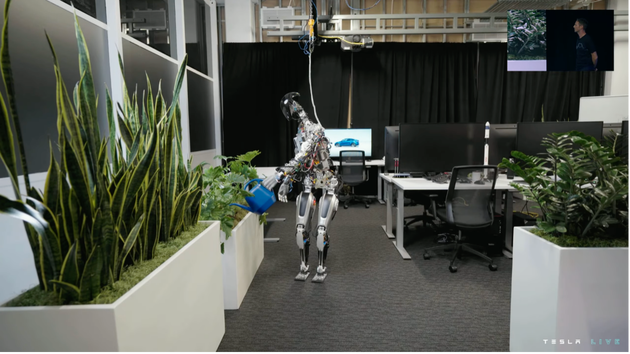 Tesla Optimus Prime, from the official website
Tesla Optimus Prime, from the official website Honda Asimo, from the official website
Honda Asimo, from the official website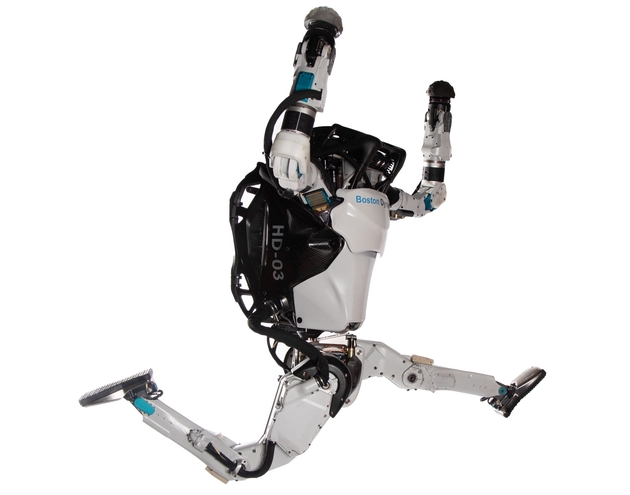 Boston Dynamics Atlas, from the official website
Boston Dynamics Atlas, from the official websiteThe BBC said in a report that many investors and financial analysts expressed skepticism about Tesla's move to robotics, and they believed that Tesla should focus on projects closer to its core business - electric vehicles.
Of course, Musk doesn't think so. He said that Tesla's goal is to produce millions of Optimus Primes, which will fundamentally change human civilization.
Optimus Prime will come into the factory to screw the screws?
As a businessman, Musk will not let Optimus just stay in the laboratory. For the mass production of Optimus Prime, Musk has given a time limit: 3-5 years. At the same time, he predicts that the final price of the mass-produced robot will reach below $20,000.
Henri Ben Amor, a professor of robotics at Arizona State University, said Musk's $20,000 price target was a "good proposition" because humanoid robots currently cost as much as $100,000.
But he also noted: "There are some differences between that ambition and what they're proposing." "When it comes to dexterity, speed, the ability to walk steadily, etc., there's a lot of work to be done."
The use of Optimus Prime also seems to be full of controversy in the industry.
"Our goal is to make useful humanoid robots as quickly as possible," Musk emphasized several times at AI Day.
He admits that there are robots available today that seem to be able to do more, but unlike them, Optimus is designed for mass production, up to millions.
He also added that achieving this goal would bring about fundamental changes to human civilization.
However, said Aaron Johnson, a professor of mechanical engineering at Carnegie Mellon University, the need for robots is questionable. "What's really impressive is how quickly they got to this level. But what's still uncertain is, what's going to be the use case for these millions of robots?"
On social media, netizens are open to the use of Optimus Prime. Some people speculate that it will be used to colonize Mars, and some people think that it will only be on the production line of the Tesla Gigafactory, while Tesla It has been revealed that Optimus Prime will be the first to be tested in the Tesla factory.
The Wall Street Journal said in the article that when Musk initially introduced the Tesla robot, he said that the robot would solve the labor shortage problem and have a wide-ranging impact on the labor market.
The article further mentions that Tesla itself is facing problems with automation. Early attempts by Tesla to scale up vehicle production through a high degree of automation suffered setbacks and the company had to rely heavily on factory workers. Musk has since tweeted that "humanity is underrated."
One of the big questions surrounding Tesla's humanoid robot is its core purpose, said Chris Atkeson, a professor of robotics at Carnegie Mellon University. If Tesla's main purpose is to improve manufacturing, he said, a quadruped robot could be more useful than a humanoid robot, in part because the extra legs are good for balance.
Is Tesla really inferior to Boston Dynamics for building robots?
On AI Day, Tesla showed only a prototype of a humanoid robot. Musk and his team made no secret that this robot is still far from maturity. Tesla even moved out the unfinished prototype of the next-generation Optimus Prime. to make the audience laugh.
It is still difficult to evaluate the performance of this product, which is still in the research and development stage, but many people in the industry expressed their affirmation of Tesla's research and development progress on social media. The American technology media CNET also commented in the article, "This robot doesn't look as gorgeous as some other robots, such as the Atlas that Boston Dynamics will parkour, but it is Tesla in less than eight months. assembled over time."
CNET also said that competitors like Boston Dynamics, which have been working on humanoid robots for years, have only produced prototypes so far. More common everyday are robots with limited functionality, such as a wheeled delivery robot or Amazon's Astro, which is a home tablet equipped with wheels.
However, many analysts have expressed doubts about Tesla's ability to make robots.
“If Tesla or any other company could develop working, powerful, effective robots at relatively low cost, it would make an unimaginably drastic change in the modern economy and society. Warehouse workers, fast food workers, look at Doormen, factory workers, construction workers, maids, landscaping workers, logistics personnel, and inventory clerks will all be roles that advanced humanoid robots will fill. Is it really capable of delivering this kind of robot."
Diana Rus, a professor at MIT and director of the Computer Science and Artificial Intelligence Laboratory, told Forbes Magazine that "the more you cover, the less you do well," which is why most of the robots humans have today are not The reason for not having a human form.
"There's a trade-off between how efficiently a robot can perform a task and the kinds of functions a robot can perform," Rus said. Robots should be modular and assembled according to different needs.
In fact, it is not uncommon for people to hold similar views to Rus. Humanoid robots have appeared for many years, but they have never been truly commercialized. Especially in March 2022, Honda's "20-year-old" humanoid robot Asimo announced his retirement, which made many people question the feasibility of humanoid robots.
Some analysts also said in social media that to look at this humanoid robot from the perspective of Tesla's artificial intelligence ecology, cars, robots and autonomous driving, DOJO supercomputers can form a closed loop, and DOJO and autonomous driving systems act as "brains", Cars and robots expand cognition in physical space, and then train the "brain" in turn. The final result may affect human civilization more than a robot that can parkour.
related articles
Article Comments (0)
- This article has not received comments yet, hurry up and grab the first frame~






